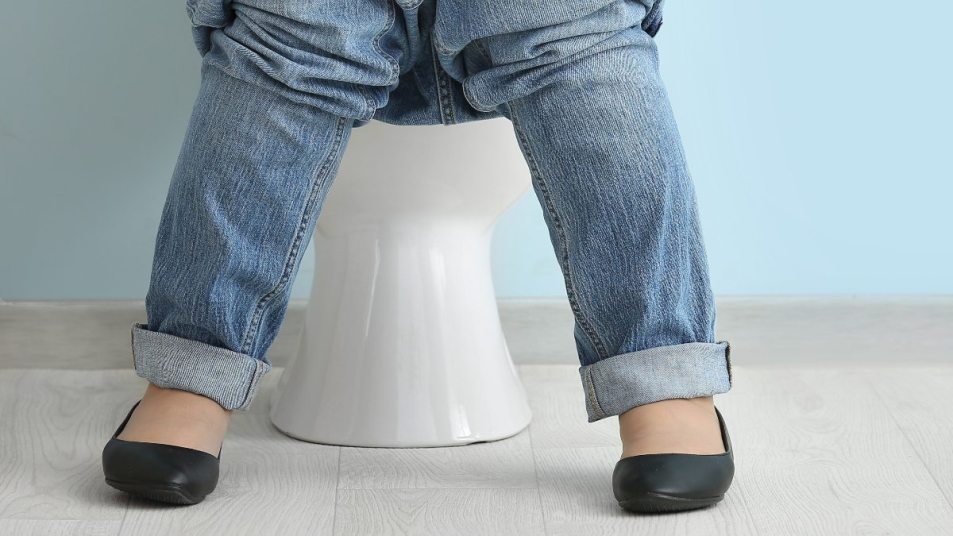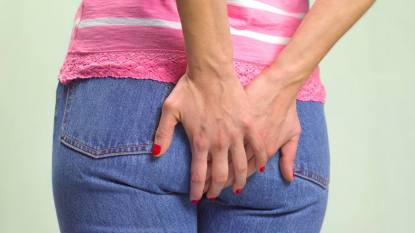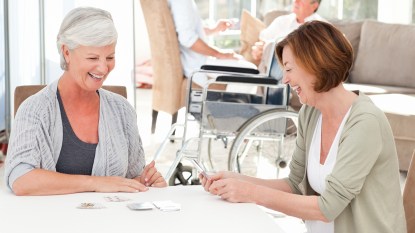Is It Good Or Bad to Squat Over the Toilet When You Pee? The Answer Surprised Me
Some squatting is OK, but the kind you do in a public bathroom is probably not.

For as long as I can remember, I’ve done my best to never let my skin touch the seat of a public toilet. Some bathrooms, as I’m sure you know, are downright appalling. But desperate times call for desperate measures, and squatting to pee has often been my only solace. Besides, I’ve found myself thinking as my legs started to burn, it’s strengthening my muscles, right?
However, I recently learned that hovering over the toilet seat strengthens the wrong muscles, and doing it regularly can lead to pelvic floor dysfunction and UTIs. To better understand what’s going on when we squat to pee (and learn what the pelvic floor is, exactly), I reached out to experts.
What is the pelvic floor?
“The pelvic floor is a group of muscles at the base of the pelvis,” explains Amanda Olson, pelvic floor physical therapist and chief clinical officer at Intimate Rose. “These muscles are located inside the pelvis and extend from the pubic bone to the tailbone, as well from sit bone to sit bone, like a sling or a hammock.”
“There are three layers of muscles,” Kim Vopni, restorative exercise specialist, personal trainer, and self-proclaimed vagina coach, tells Woman’s World. “The first [outermost] layer is primarily responsible for sexual response. The second layer is primarily responsible for managing the openings — the urethra, the vagina, and the anus. The third [innermost] layer is primarily responsible for organ support — bladder, uterus, rectum. The three layers work as a part of the team and make up the foundation of the ‘core’.”
Why is squatting to pee so bad?
Properly engaging and relaxing the pelvic floor muscles is crucial, because it helps us hold our urine or stool until we find a bathroom, then empty our bladder and bowels. We run into trouble when these muscles don’t engage or relax in the way they should.
“Hovering over the toilet causes the pelvic floor muscles to engage when in fact they should relax,” says Dr. Olson. “Hovering can therefore result in incomplete emptying of the bladder.”
“Because the muscles are not completely relaxed, many feel the need to push to get the pee out… which can explain why there is often pee on the seats,” says Vopni. It’s a cyclical problem, then — dirty seats lead us to squat, and squatting causes us to, well, spray the seat. Rinse and repeat.
But the problems don’t stop there. “Chronically hovering and not emptying the bladder can result in urinary urgency,” says Dr. Olson. That means that over time, you might feel a stronger, more sudden need to urinate and [you] won’t be able to hold it for very long. “And [hovering] may, in come cases, result in a UTI.”
What’s the best position to urinate?
Vopni, whose video on not squatting to pee went viral on TikTok, says the best way to pee is (you guessed it) to sit down.
While you sit, “lean forward, take some breaths, and focus on relaxing the pelvic floor so the bladder can contract and empty completely,” she says in the video.
“Relaxing the pelvic floor” might sound confusing, because it’s not easy to directly relax it. Instead, focus on gentle, diaphragmatic breathing — or belly breaths, as many people like to call them, because you let your belly move in and out instead of lifting your chest up and down. Think about releasing tension in your body, and try your best not to push.
And if you have a Squatty Potty (or any toilet stool), feel free to use it for expelling stool and urine, as long as it feels right. “The Squatty Potty is an amazing tool for bowel movement,” says Dr. Olson. “However, when attempting to urinate, some people may find that the angle is not ideal. This often occurs when someone has pelvic organ prolapse. Thus, the use for urination is variable.”
If you have a bladder or uterine prolapse (when the bladder or uterus drops from where it should sit in the pelvis due to weak pelvic floor muscles), Vopni recommends not using a toilet stool. Instead, sit with your feet on the floor and forearms on top of your thighs. “Ultimately, whatever position allows you to sit comfortably and relax the pelvic floor muscles will ensure optimal emptying,” Vopni tells us.
What should I do if I have to squat?
We get it. Some toilet seats are really gross, but they’re your only option. Fortunately, Vopni has an answer: When you have to hover, try hanging onto something, like the toilet paper holder, if it’s stable. “Or if there is a side bar, hang onto it so that you can relax just a little bit more,” she says. Also, the occasional hover isn’t going to cause issues. “Don’t panic… once in awhile is not a big deal,” she adds.
“The rare occasion of [squatting to pee] in a very gross or dirty bathroom will not result in chronic issues,” Dr. Olson confirms.
And if you’re on a walk in the woods and you need to go, great news: A full squat is perfectly healthy. It’s the half-squat that isn’t so great.
One last note: If you are struggling with urinary urgency, prolapse, incontinence, or other potential pelvic floor problems, make an appointment with a pelvic floor physical therapist. A therapist will work with you to treat your symptoms or point you in the direction of the right doctor.
Here’s to a healthier pelvic floor, and strain-free bathroom trips!













